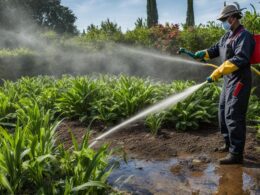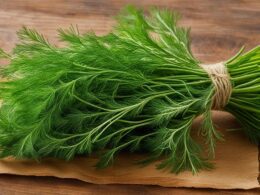Welcome to our guide on the growth rate and planting tips for the magnificent Bur Oak (Quercus macrocarpa). If you’re looking for a highly adaptable and hardy tree that can withstand harsh weather conditions and add beauty to your landscape, the Bur Oak is an excellent choice. In this article, we will explore the growth rate of the Bur Oak and provide you with valuable tips on how to plant and care for this majestic tree.
The Bur Oak has a unique ability to thrive in various soil conditions, including clay soils and alkaline conditions. It can withstand strong winds, city pollution, and even drought. However, providing it with extra water can help the tree grow faster and larger. In ideal conditions, the Bur Oak can reach heights of up to 170 feet and diameters of 6-7 feet. Its deeply lobed leaves and distinctive mossy-fringed acorns add to its grand and sculptural effect.
When it comes to planting the Bur Oak, it is recommended to choose pot-grown seedlings or smaller ball-and-burlap plants. Transplanting Bur Oaks can be challenging, so starting with smaller plants will increase their chances of survival. Consider planting the tree on the west side of your house in a windy area, as the Bur Oak is known for its strength in such conditions.
It’s important to note that the Bur Oak has a slower growth rate compared to other trees like maples and ashes. But don’t let that deter you, as the rewards of patience are well worth it. These trees provide shade, beauty, and a legacy for future generations to enjoy.
Stay tuned for the rest of our guide, where we’ll dive into the identifying features, botanical range, habitat conditions, and reproduction of the Bur Oak. Whether you’re a seasoned gardener or a novice enthusiast, this information will help you make informed decisions when it comes to planting and caring for the Bur Oak in your backyard.
Identifying Features and Botanical Range
The Bur Oak stands out with its distinctive characteristics. Its leaves are 15-30 cm long, deeply lobed in the lower half, and have rounded lobes. The upper surface of the leaves is shiny green, while the underside is pale and hairy. The buds of the Bur Oak are large and egg-shaped, with stout, slightly hairy yellowish-brown twigs. Younger trees feature brown, furrowed, and rough bark, while mature trees have deeply furrowed bark with thick, irregular dark grey scales. The Bur Oak produces large acorns, enclosed by a cup that covers at least half of the acorn, and has knobby scales with a mossy fringe.
When grown in Canada, the Bur Oak is relatively small, reaching heights of 12-18 meters and diameters of 60-80 cm. However, in certain parts of the United States, it can reach heights of up to 29 meters and diameters of 2.6 meters. The Bur Oak is widespread throughout southeastern Saskatchewan, southern Manitoba, Ontario, Quebec, and east to New Brunswick, making it the most common white oak species in Canada. You can find the Bur Oak in the Deciduous Forest Region and the Great Lakes-St. Lawrence Forest Region. Notably, the Bur Oak has the tendency to hybridize easily with other white oak species, resulting in a wide range of leaf shapes.
Botanical Range
- Canada: southeastern Saskatchewan, southern Manitoba, Ontario, Quebec, and east to New Brunswick.
Habitat Conditions and Reproduction
The Bur Oak is a highly adaptable tree that can thrive in various habitat conditions and adapt to a wide range of soil types. It prefers deep, dry, rich bottom lands, but it can also tolerate well-drained sandy or clay loam soils. Interestingly, the Bur Oak can even grow on shallow soil over granite bedrock, showcasing its resilience.
One of the remarkable characteristics of the Bur Oak is its strong early root growth and deep tap root system. This allows the tree to pioneer in dry exposed locations and compete with prairie shrubs and grasses, making it a true survivor.
When it comes to reproduction, the Bur Oak produces acorns that are known for their sweet flavor. Good seed crops occur every two to three years, with lighter production in the intervening years. Although specific yield amounts are not available, the Bur Oak is recognized for its significant acorn production.
The Bur Oak is a monoecious tree, meaning it possesses both male and female flowers on the same tree. The male flowers, called catkins, are small and inconspicuous, while the female flowers are small and either solitary or clustered.
Wind plays a crucial role in pollinating the Bur Oak, ensuring the transfer of pollen between trees. Insects and wildlife are essential for acorn dissemination, aiding in the tree’s reproduction cycle.
The Bur Oak prefers a seedbed with litter or leaf cover on the forest floor. It thrives in partial shade to full sun and is adaptable to both moist and dry soil conditions.
Key Points:
- The Bur Oak thrives in various habitat conditions.
- It can adapt to a wide range of soil types, including deep, dry, rich bottom lands, sandy soils, and clay loams.
- It can grow even on shallow soil over granite bedrock.
- The Bur Oak has a strong early root growth and deep tap root system, allowing it to pioneer in dry exposed locations and compete with prairie shrubs and grasses.
- The Bur Oak produces sweet-tasting acorns, with good seed crops occurring every two to three years.
- It is a monoecious tree with male and female flowers on the same tree.
- The Bur Oak is wind-pollinated and relies on insects and wildlife for acorn dissemination.
Conclusion
The Bur Oak is a magnificent tree that adds beauty and shade to any landscape. Its adaptability to various soil types and ability to withstand harsh weather conditions make it an excellent choice for gardens and landscapes. While the Bur Oak has a slower growth rate compared to other trees, its longevity and grandeur make it worth the wait.
To promote faster and larger growth, provide the Bur Oak with extra water. When transplanting, it is recommended to use pot-grown seedlings or smaller ball-and-burlap plants for successful establishment. By planting the Bur Oak, you are contributing to the preservation of this majestic tree for future generations to enjoy and appreciate its splendor.
Consider planting the Bur Oak in your backyard on the west side of your house, especially in windy areas. This tree can withstand strong winds and add a grand and sculptural effect to your landscape. Whether you’re looking for shade, beauty, or a legacy tree, the Bur Oak is a perfect choice.
What Factors Affect the Growth Rate of Bur Oak Trees?
The growth rate of bur oak trees can be influenced by various factors such as soil quality, climate conditions, and competition with other vegetation. Understanding these white pine growth rate insights can help arborists and land managers optimize conditions for healthy and rapid growth of bur oak trees.










